From farm to fork
PRODUCTION of root vegetables
Growing root vegetables is not simple. It requires preparation in the fields and repeated processes throughout the season. The small seeds have tough conditions before the root crop is fully developed and strong enough to survive the changeable Danish weather.
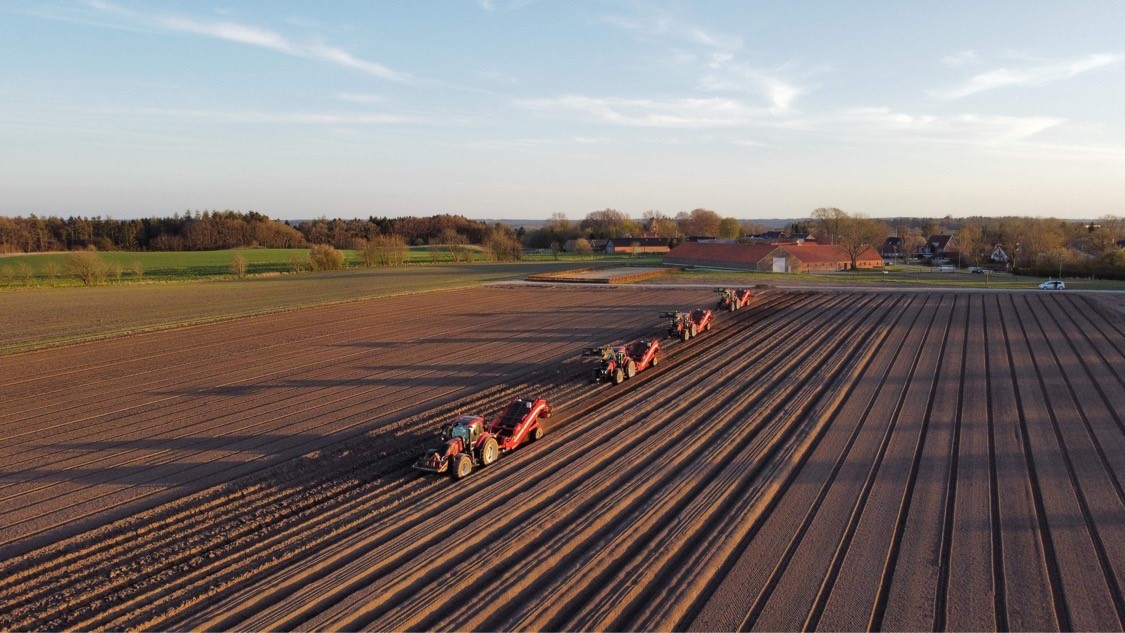
Preparing the fields
The first preparations take place in early spring around February/March. The fields are plowed, bedded, cultivated and stone-lined. Stone stringing is a process where stones are removed/collected so that the carrot seeds can germinate and grow large without meeting stones in the ground, that block the growth of the carrot. If the carrot encounters too many “obstacles” during growth, the root becomes crooked/deformed.
Seeding
The carrots are planted in raised beds with room for 3 x 4 rows in each bed. To ensure the uniformity of the carrots, they are sown at exactly the same intervals and with a carefully adjusted number of seeds.
To 1 ha. soil, we use approximately 2 million seeds.
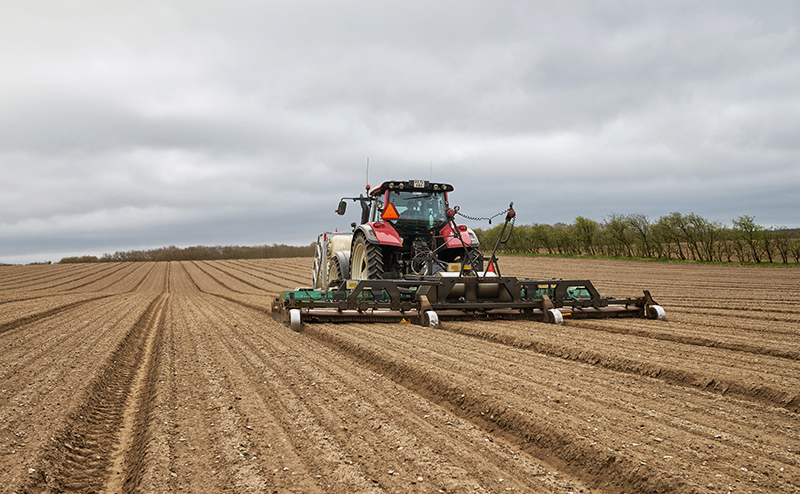
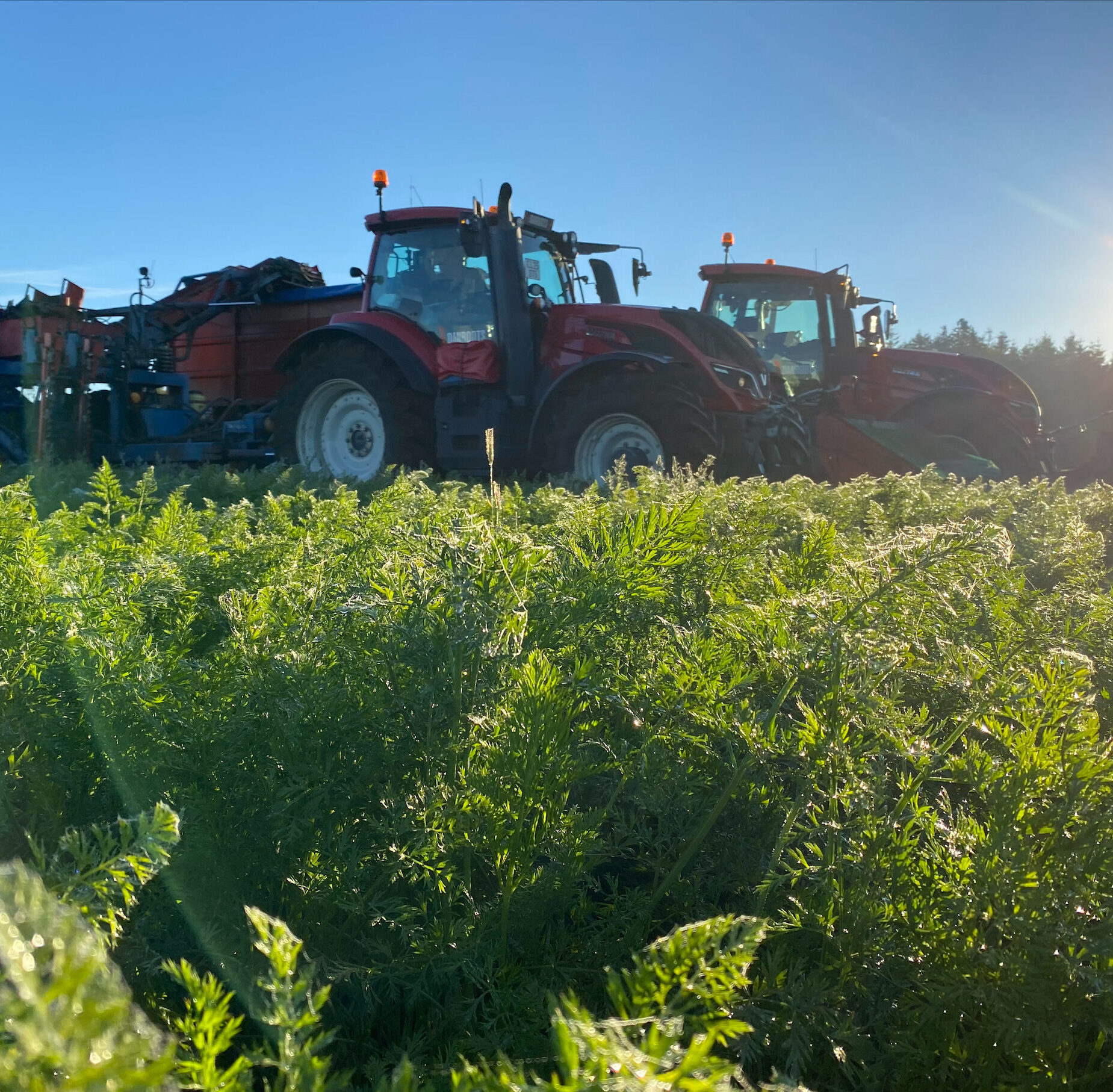
Harvest
Around the end of June, the first carrots are ready to be harvested. At this point, the carrots have just the right size and the tops are nice and green and “crispy”.
We use a carrot harvester that grabs the carrots at the top and pulls them up. In the following process, the top is cut off and the carrot ends up in the container without a top. The containers full of carrots drive back to the nursery, where the washing and packing process begins. DanRoots manages the entire harvesting process and has a strong sense of planning and quality assessment. The company’s field staff are all trained to operate the advanced tractors and harvesters.
Conventional carrots are always “ripe” first – organic carrots need a little more time in the ground and are ready about a month later.
Straw coverage
To ensure freshly harvested carrots throughout the winter, the fields are covered with straw in late fall. The straw protects the carrots from frost and cold. Throughout the winter, the soil acts as a temperate fridge and it’s far better for the carrots to be in the field than harvested and stored.
Approximately 35,000 big bales of straw are used annually to cover the fields. The straw is distributed in a thick layer on top of a special plastic that is rolled out on the field before straw distribution begins. The straw coverage takes place over several months and requires a lot of coordination.
Click the link to see how straw coverage is done in the field – it’s a beautiful sight!
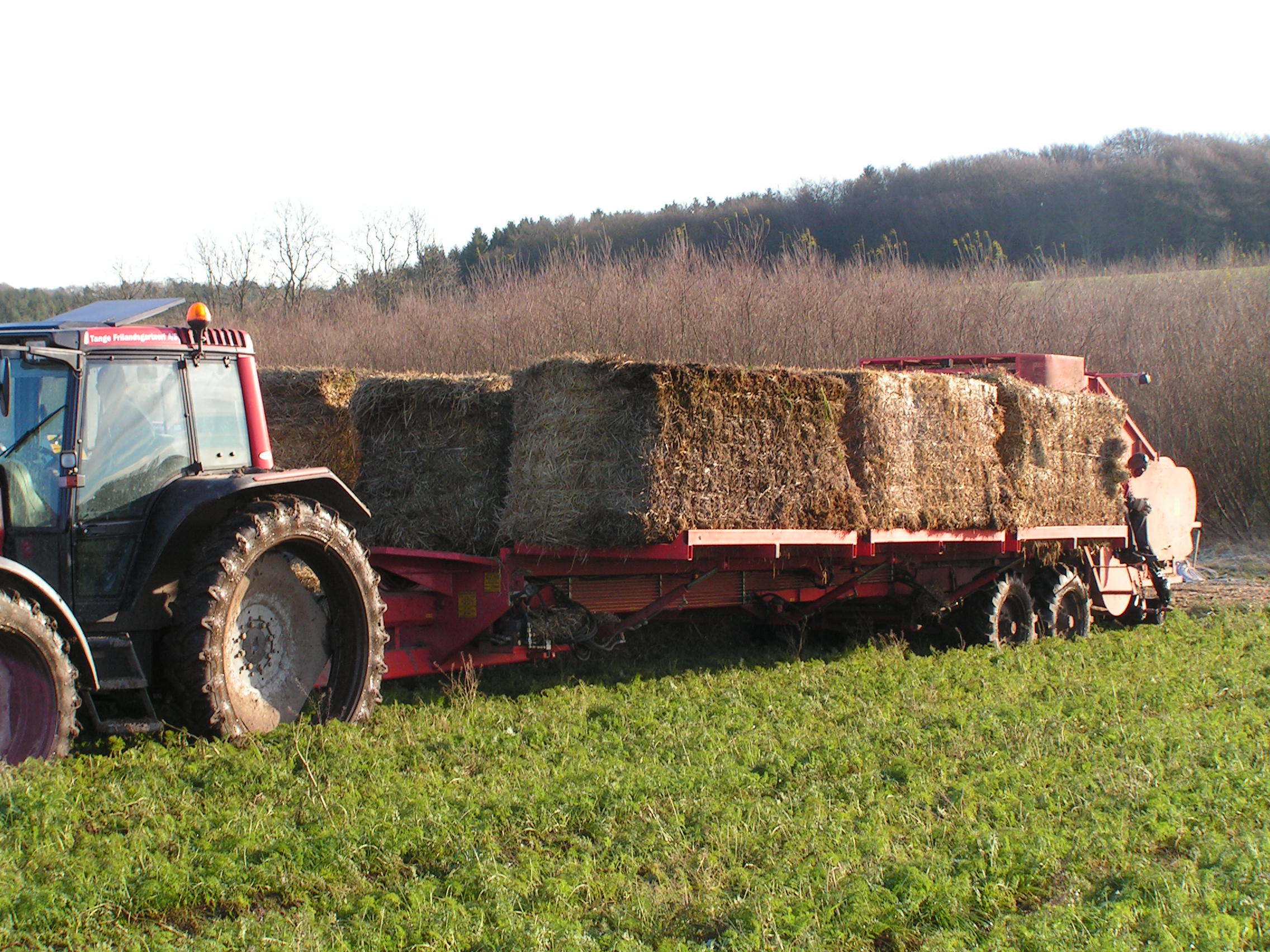
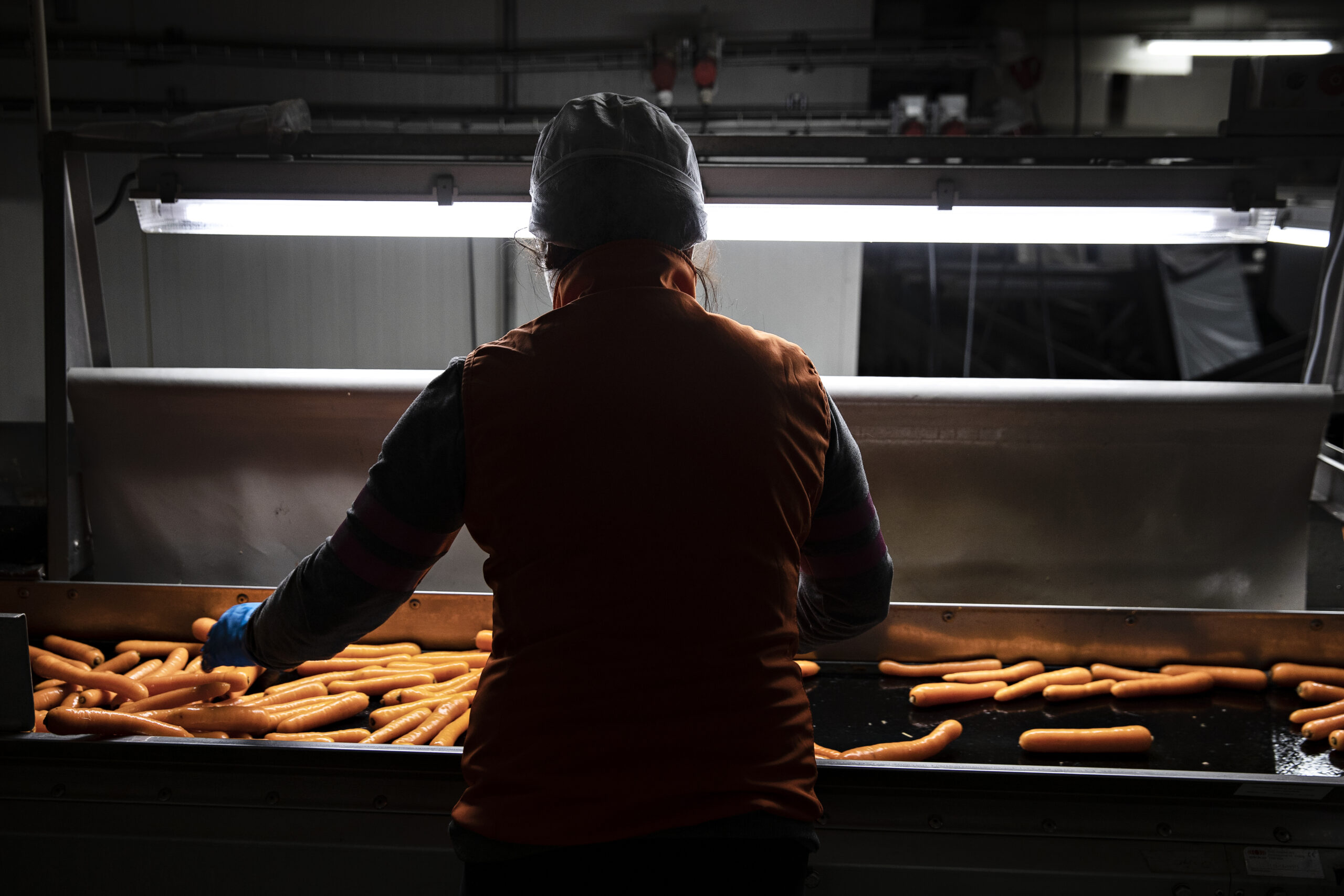
Washing and packing
Only a few hours after harvesting, we wash the carrots in a large brush washer with clean water. It washes away soil, stones and other debris. After washing, the carrots are sorted on an optical sorter that can handle up to 7 different sizes. The carrots then go through a manual sorting process, after which they are sprinkled with ice water and packed.
When the carrots are packed, they are immediately placed in cold storage, then picked up and transported in insulated refrigerated trucks to customers.
We always recommend that root vegetables are washed well before cooking to avoid soil bacteria in the kitchen.
